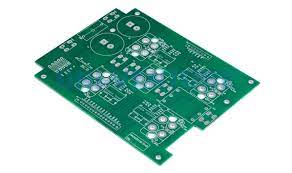Consumer Automotive Electronic PCB Assembly
Name: Consumer Automotive Electronic PCB Assembly
Origin: China
Certified: UL, CE, RoHS
Copper Thickness: 1 oz
Board Thickness: customized
Surface Finishing: OSP
Solder mask: White
What is meant by Consumer Automotive Electronic PCB Assembly?
Automotive electronics for consumers manufacturing, assembling, and testing circuit boards and other electronic parts for the automobile sector are all steps in the PCB assembly process. Complex systems employed in a wide range of vehicles, including automobiles, trucks, and other vehicles, are created using this approach.
- Consumer Automotive Electronic PCB Assembly assembly is crucial to the automotive sector. It enhanced design flexibility, dependability, and cost efficiency. The worldwide economy’s consumer automotive electronics sector is expanding quickly.
- The need for effective and economical production solutions grows along with the demand for sophisticated electronic systems and components. Manufacturing companies may now save costs and increase production output thanks to automation, which has become a crucial part of manufacturing.
How Does Consumer Automotive Electronic PCB Assembly Help Automotive Industries?
Consumer automotive electronic PCB assembly PCB is essential to the car industry because it offers many advantages that enhance driving comfort, safety, and efficiency. Consumer automotive assembly benefits the automobile industry in the following ways:
-
Advanced Vehicle Functionality:
Modern automobiles have various electronic systems and features, including connection choices, GPS navigation, entertainment, and advanced driver assistance systems (ADAS). Integrating these intricate systems is made possible by electronic PCB assembly, enabling automobiles to provide cutting-edge functionality and improve the driving experience.
The implementation of safety measures in automobiles depends on automotive electronic PCB assembly. It allows integrating features like collision warning, lane departure warning, adaptive cruise control, electronic stability control, and anti-lock braking systems (ABS). The PCB construction for these safety systems enables accurate sensor data and quick communication between numerous components.
-
Diagnostic and Maintenance Systems:
The deployment of diagnostic and maintenance systems is made possible by PCB assembly in vehicle electronics. These systems give real-time data to indicate possible problems or maintenance needs while monitoring various vehicle components. By utilizing PCB assembly, automotive manufacturers may provide predictive maintenance features, assuring prompt servicing and lowering the danger of significant breakdowns.
-
Fuel Economy and Emissions Reduction:
Automobile manufacturers, Leadsintec, are always working to increase fuel economy and lower emissions in response to rising concerns about fuel use and the environment. The integration of engine control units (ECUs) and powertrain management systems that optimize fuel economy and emissions is made possible by electronic PCB assembly. These systems track and modify several variables to ensure optimum performance, including the air-fuel ratio, ignition timing, and throttle response.
Why choose Consumer Automotive Electronic PCB Assembly, Leadsintec?
-
Communication and Connectivity:
The automobile sector is now subject to consumer expectations about communication and seamless gadget integration. When connectivity modules like Bluetooth, Wi-Fi, and cellular technologies are included during PCB assembly, functions like hands-free calling, music streaming, and internet access are made possible. PCB assembly also allows various onboard systems to communicate with outside gadgets, enabling features like smartphone integration and vehicle-to-vehicle (V2V) communication.
-
Cost Effectiveness and Manufacturing Scalability:
PCB assembly benefits car manufacturers in terms of cost-effectiveness and manufacturing scalability. Furthermore, PCB designs may be scaled and modified for other vehicle types, facilitating more efficient manufacturing procedures and a shorter time to market.






